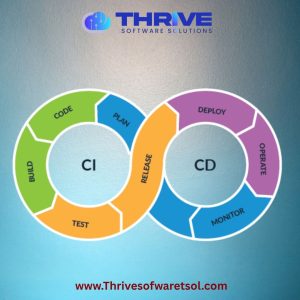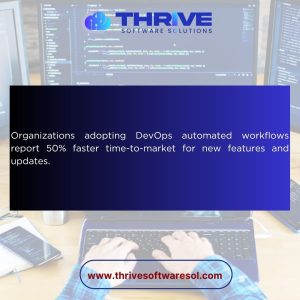In today’s fast-moving digital landscape, businesses must release new features and updates faster than ever without sacrificing quality or security. By 2025, continuous integration and continuous delivery (CI/CD) pipelines have become the foundation of modern software delivery. A mature CI/CD pipeline automates code integration, testing, deployment, and feedback, enabling teams to deploy multiple times per day, recover rapidly from failure, and maintain a continuous feedback loop. This article explores why a robust CI/CD pipeline is essential for DevOps, breaks down its core stages, and shares best practices for 2025.
Business Drivers for CI/CD Adoption
Market pressures are relentless: customers expect frequent feature updates, rapid bug fixes, and always-on reliability. According to the latest DORA report, elite organizations with mature CI/CD pipelines deploy 200× more frequently and recover from failures 24× faster than low performers. These metrics translate directly into competitive advantage. Faster releases mean quicker time-to-market for critical features. Rapid recovery minimizes downtime and revenue loss. Automated workflows reduce manual toil, freeing teams to innovate. In a world where software drives business outcomes, CI/CD pipelines are no longer optional—they are mission critical.
Core CI/CD Pipeline Stages
- Source Control & Branch Strategy
Every CI/CD pipeline begins with source control. Git repositories—whether GitHub, GitLab, or Bitbucket—serve as the single source of truth for application and infrastructure code. Trunk-based development, favored by high-velocity teams, keeps a single main branch with short-lived feature branches, minimizing merge conflicts. Alternatively, GitFlow offers more structure for larger organizations. Regardless of approach, every merge to main triggers automated builds and tests, ensuring code quality from the start. - Automated Build & Static Analysis
When code lands in the main branch, the pipeline kicks off an automated build. Tools like Jenkins, CircleCI, GitLab CI, or GitHub Actions compile source code, resolve dependencies, and run static analysis. Static code analysis tools—ESLint for JavaScript, SonarQube for multi-language scanning, or Snyk for open-source security checks—identify syntax errors, security vulnerabilities, and policy violations early. Early detection of issues cuts defect rates by 40% on average and prevents flawed code from progressing. - Comprehensive Automated Testing
High-impact CI/CD pipelines include layered automated testing: unit tests verify individual functions or classes; integration tests ensure modules work together; end-to-end tests replicate real user scenarios. By shifting tests left, teams catch defects earlier when they are cheaper to fix. Organizations practicing continuous testing report 50% fewer change-failure incidents. Automated test suites gate each pipeline stage, blocking deployments if any test fails. - Artifact Management & Versioning
Successful pipelines produce immutable, versioned artifacts—Docker images, JAR packages, or npm modules—stored in artifact repositories such as JFrog Artifactory, Nexus Repository, or cloud registries. Immutable artifacts simplify rollbacks and provide traceability: you always know exactly what version of code ran in production. This traceability is crucial for compliance audits and forensic analysis during incident investigations. - Continuous Delivery & Deployment
Continuous Delivery automates the promotion of artifacts through development, staging, and pre-production environments. Approval gates—manual or automated—can enforce compliance checks, security scans, or stakeholder sign-off while preserving velocity. Continuous Deployment goes a step further: every passing build deploys automatically to production. Top-performing teams deploy multiple times per day with change-failure rates under 15%, enabling rapid, incremental updates without user impact. - Observability & Feedback Loops
CI/CD pipelines must integrate observability to close the feedback loop. Monitoring and logging tools—Prometheus, Grafana, Elastic Stack, or cloud-native services—capture metrics, logs, and traces across environments. Pipelines emit deployment events and test results to dashboards, enabling real-time visibility into performance, errors, and user experience. Automated alerts or ChatOps workflows can trigger rollbacks or remediation scripts when metrics exceed thresholds, ensuring resilience and uptime.
Embedding Security: DevSecOps in Your Pipeline
Security can no longer be an afterthought. DevSecOps integrates security checks into every pipeline stage. Automated static application security testing (SAST), dynamic application security testing (DAST), and dependency scanning catch vulnerabilities before deployment. Policy-as-code tools like Open Policy Agent enforce organizational policies and compliance requirements. By shifting security left, teams resolve vulnerabilities 11.5× faster and reduce security incidents by 50%.
Best Practices for 2025 CI/CD Pipelines
- Embrace Trunk-Based Development: Short-lived branches and frequent merges reduce integration conflicts and accelerate feedback.
- Use Feature Toggles: Decouple deployment from feature release, enabling dark launches, A/B testing, and gradual rollouts.
- Automate Rollbacks: Define health-check thresholds and automated rollback triggers to halt faulty deployments and restore service quickly.
- Leverage Infrastructure as Code: Provision and configure environments with Terraform, CloudFormation, or Pulumi, ensuring consistency across pipeline stages.
- Optimize Pipeline Performance: Parallelize test suites, use caching for dependencies, and adopt AI-driven test generation to increase coverage and reduce runtimes.
- Continuously Measure DORA Metrics: Track deployment frequency, lead time for changes, change failure rate, and mean time to restore to identify bottlenecks and improvements.
Conclusion
In 2025, a robust CI/CD pipeline is the backbone of any high-performing DevOps organization. By automating code integration, testing, deployment, security, and feedback, teams achieve faster time-to-market, higher quality, and continuous resilience. As customer expectations and market demands intensify, mastering CI/CD pipelines isn’t just a technical advantage—it’s a strategic imperative. Start by assessing your pipeline maturity, adopt one new best practice this quarter, and iterate relentlessly. Transform your software delivery into a continuous engine of innovation and competitive advantage with Thrive Software Solutions DevOps developlment services in WA, USA.






